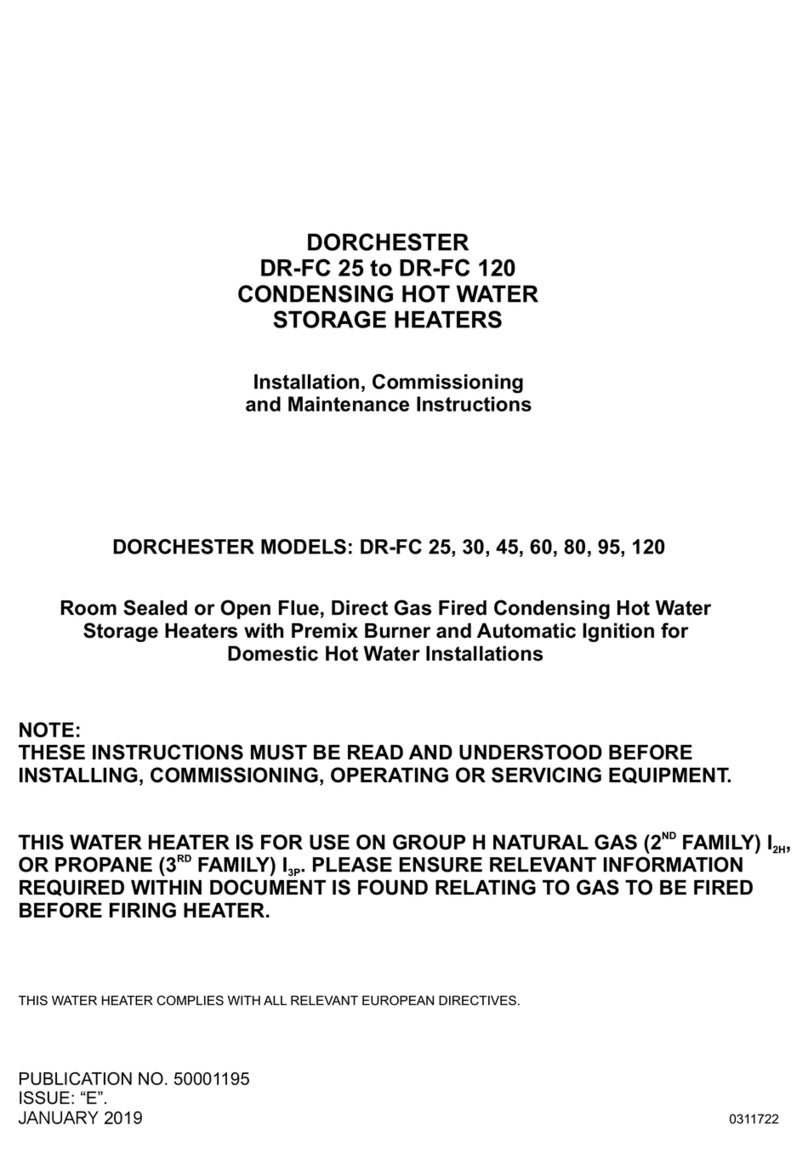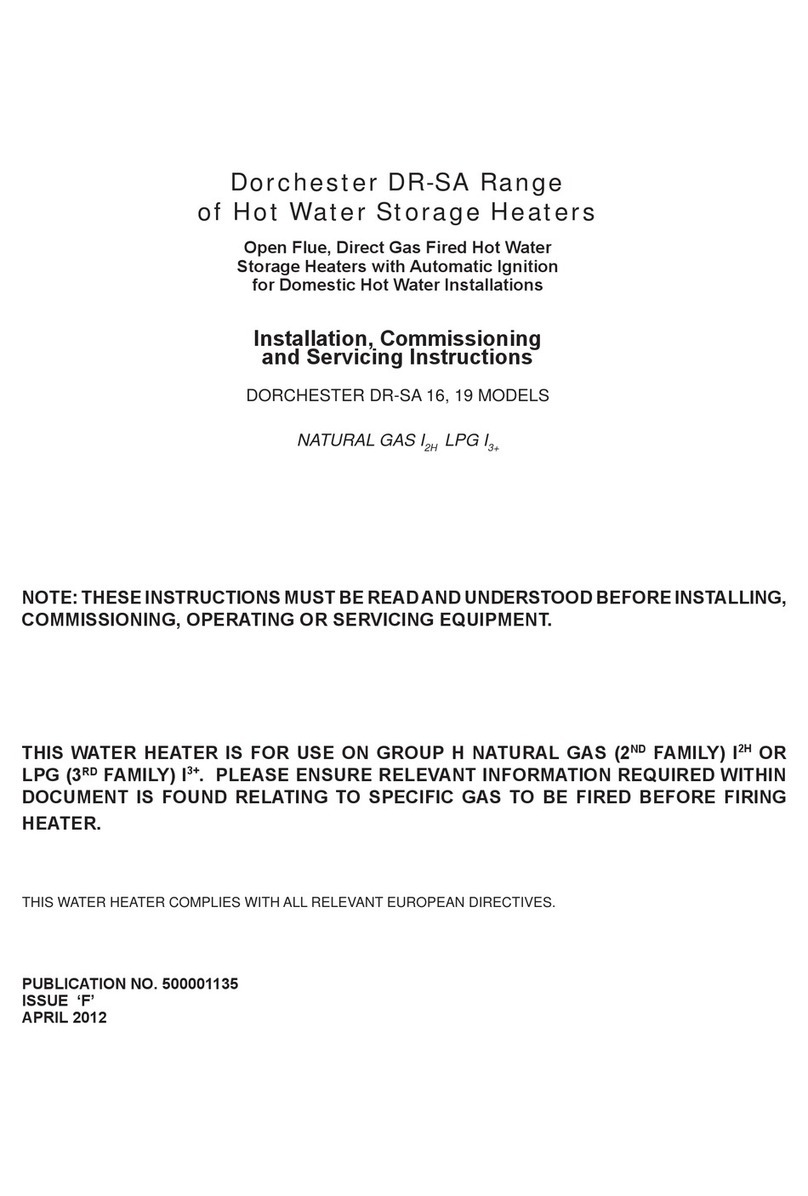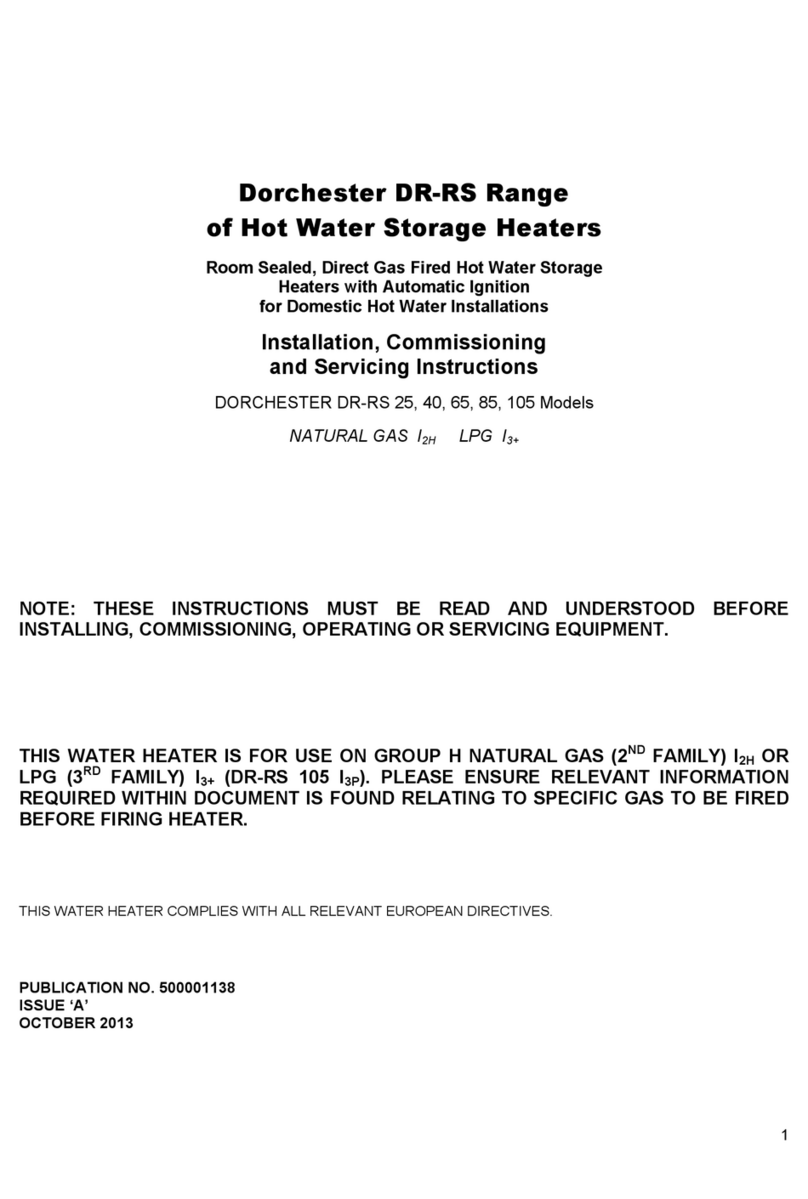
4Instruction manual DR-LA
gis
3.9 Flue gas discharge - - - - - - - - - - - - - - - - - - - - - - - - - - - - 27
3.9.1 Introduction - - - - - - - - - - - - - - - - - - - - - - - - - - 27
3.9.2 Fitting the draught diverter - - - - - - - - - - - - - - - - - - - 27
3.9.3 Flue gas thermostat assembly - - - - - - - - - - - - - - - - - 28
3.10 Electrical connection - - - - - - - - - - - - - - - - - - - - - - - - - - - 29
3.10.1 Introduction - - - - - - - - - - - - - - - - - - - - - - - - - - 29
3.10.2 Preparation- - - - - - - - - - - - - - - - - - - - - - - - - - - 29
3.10.3 Mains power - - - - - - - - - - - - - - - - - - - - - - - - - - 30
3.11 Checking the supply pressure and burner pressure - - - - - - - - - - - - 31
3.12 Conversion to a different gas category - - - - - - - - - - - - - - - - - - - 33
3.12.1 Introduction - - - - - - - - - - - - - - - - - - - - - - - - - - 33
3.12.2 Conversion to a different gas category DR-LA 30 through 95 - - 34
3.12.3 Conversion to a different gas category, DR-LA110 - - - - - - - 36
4 Filling and draining - - - - - - - - - - - - - - - - - - - - - - - 39
4.1 Introduction - - - - - - - - - - - - - - - - - - - - - - - - - - - - - - - - 39
4.2 Filling the water heater - - - - - - - - - - - - - - - - - - - - - - - - - - 40
4.2.1 Filling unvented installations - - - - - - - - - - - - - - - - - - 40
4.2.2 Filling vented installations- - - - - - - - - - - - - - - - - - - - 40
4.3 Draining the water heater - - - - - - - - - - - - - - - - - - - - - - - - - 40
4.3.1 Draining unvented installations - - - - - - - - - - - - - - - - - 40
4.3.2 Draining vented installations - - - - - - - - - - - - - - - - - - 41
5 Controls- - - - - - - - - - - - - - - - - - - - - - - - - - - - - 43
5.1 Introduction - - - - - - - - - - - - - - - - - - - - - - - - - - - - - - - - 43
5.2 Control panel - - - - - - - - - - - - - - - - - - - - - - - - - - - - - - - 43
5.3 Explanation of the symbols - - - - - - - - - - - - - - - - - - - - - - - - 44
5.4 ON/OFF switch - - - - - - - - - - - - - - - - - - - - - - - - - - - - - - 44
5.5 Control thermostat - - - - - - - - - - - - - - - - - - - - - - - - - - - - 44
5.6 Burner control reset button - - - - - - - - - - - - - - - - - - - - - - - - 44
5.7 Flue gas thermostat reset button - - - - - - - - - - - - - - - - - - - - - 44
6 Status of the water heater - - - - - - - - - - - - - - - - - - - 47
6.1 Introduction - - - - - - - - - - - - - - - - - - - - - - - - - - - - - - - - 47
6.2 Operating states - - - - - - - - - - - - - - - - - - - - - - - - - - - - - 47
6.3 Error states - - - - - - - - - - - - - - - - - - - - - - - - - - - - - - - - 47
7 Starting up and shutting down - - - - - - - - - - - - - - - - - 49
7.1 Introduction - - - - - - - - - - - - - - - - - - - - - - - - - - - - - - - - 49
7.2 Starting up - - - - - - - - - - - - - - - - - - - - - - - - - - - - - - - - 49
7.3 Shutting down- - - - - - - - - - - - - - - - - - - - - - - - - - - - - - - 49
7.3.1 Shut the water heater down for brief periods ("OFF mode") - - - 49
7.3.2 Isolate the water heater from the power supply - - - - - - - - - 49
7.3.3 Shut the water heater down for a longer period - - - - - - - - - 49
7.4 Heating cycle - - - - - - - - - - - - - - - - - - - - - - - - - - - - - - - 50
8 Troubleshooting - - - - - - - - - - - - - - - - - - - - - - - - 51
8.1 Introduction - - - - - - - - - - - - - - - - - - - - - - - - - - - - - - - - 51
8.2 Troubleshooting table for general errors - - - - - - - - - - - - - - - - - - 52
8.3 Troubleshooting table "no hot water"- - - - - - - - - - - - - - - - - - - - 53
8.4 Troubleshooting table "insufficient hot water’" - - - - - - - - - - - - - - - 55
9 Maintenance - - - - - - - - - - - - - - - - - - - - - - - - - - 57
9.1 Introduction - - - - - - - - - - - - - - - - - - - - - - - - - - - - - - - - 57


































